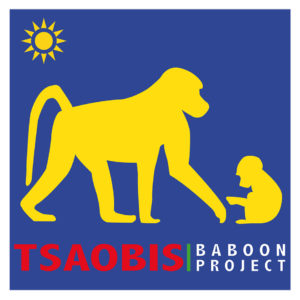The Tsaobis Baboon Project is a long-term study of a desert baboon population in Namibia. Our work is carried out in collaboration with Tsaobis Nature Park and in affiliation with the Gobabeb Namib Research Institute.
The aim of the Tsaobis Baboon Project is to carry out fundamental research in behavioural and population ecology using desert baboons as a model system. Our work also has a conservation theme with its interest in the effects of complex social structure on population dynamics and extinction.
The Tsaobis Baboon Project is based at Tsaobis Nature Park on the edge of the Namib Desert. At present, we work with three troops of chacma baboons (Papio ursinus) comprising over 160 individuals in total. Each baboon is individually recognisable, of known age, and of known relatedness to other individuals in the population.
Research on the Tsaobis baboons began in 1990, and has been ongoing on an annual basis since 2000. To date, over 50 scientific publications have been produced from our research. For a full bibliography, please see Publications.
Research permission in Namibia is kindly provided by the National Commission on Research, Science and Technology, the Ministry of Environment and Tourism, and the Ministry of Land Reform. In Europe, the Tsaobis Baboon Project is a collaboration between three institutions:
- the Institute of Zoology, the research arm of the Zoological Society of London (UK),
- the Department of Anthropology of University College London (UK), and
- the Institute for Evolutionary Sciences, a mixed research unit from the University of Montpellier & CNRS (France).
Partnerships
- Centre for Research in Evolutionary, Social and Inter-Disciplinary Anthropology at Roehampton University London
- Departments of Zoology & Biological Anthropology, University of Cambridge
- Department of Zoology, University of Oxford
- Institute of Integrative Biology, University of Liverpool
- Fenner School of Environment and Society at the Australian National University


